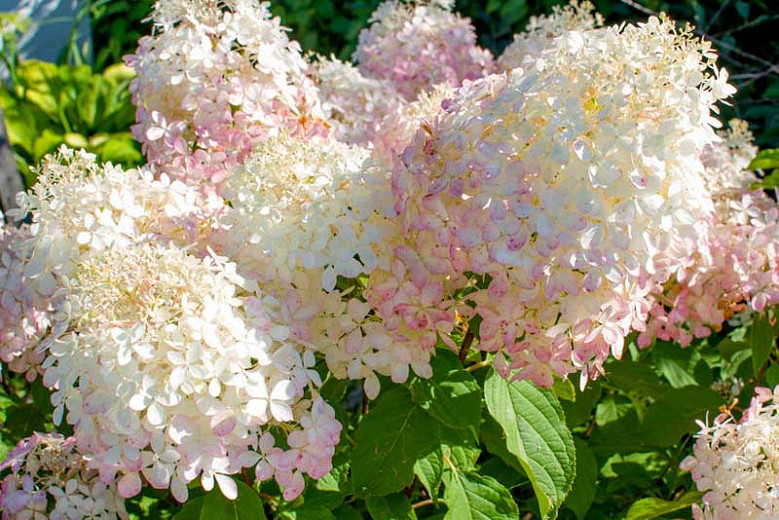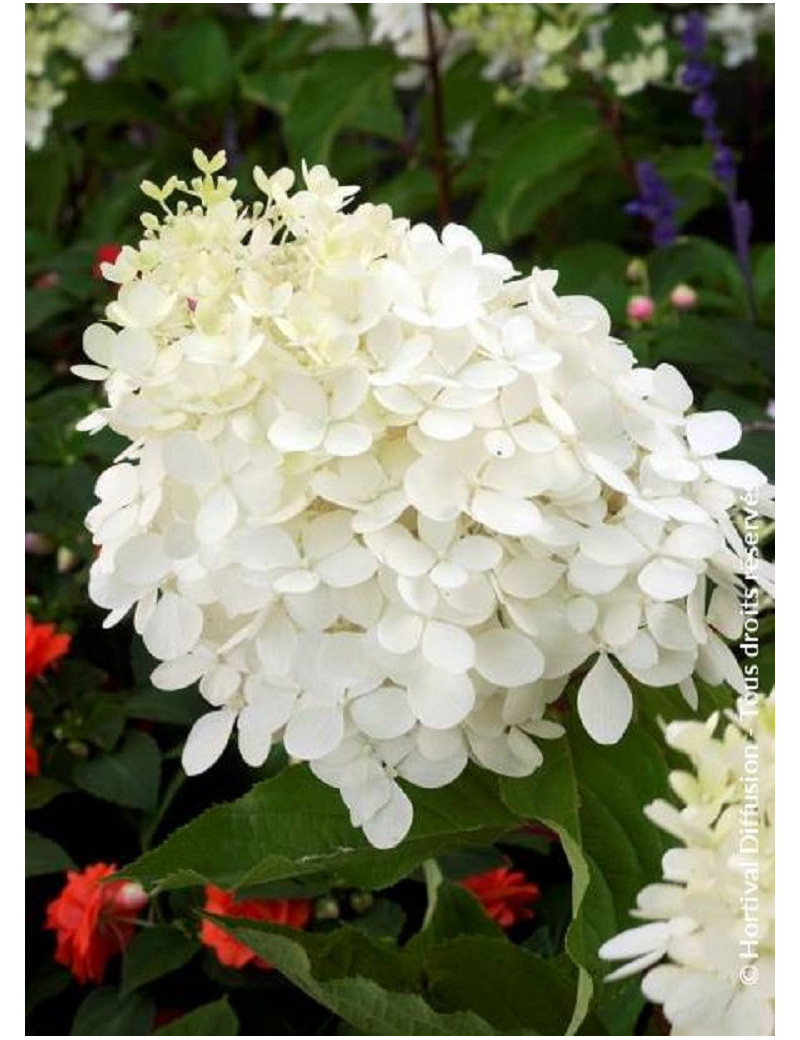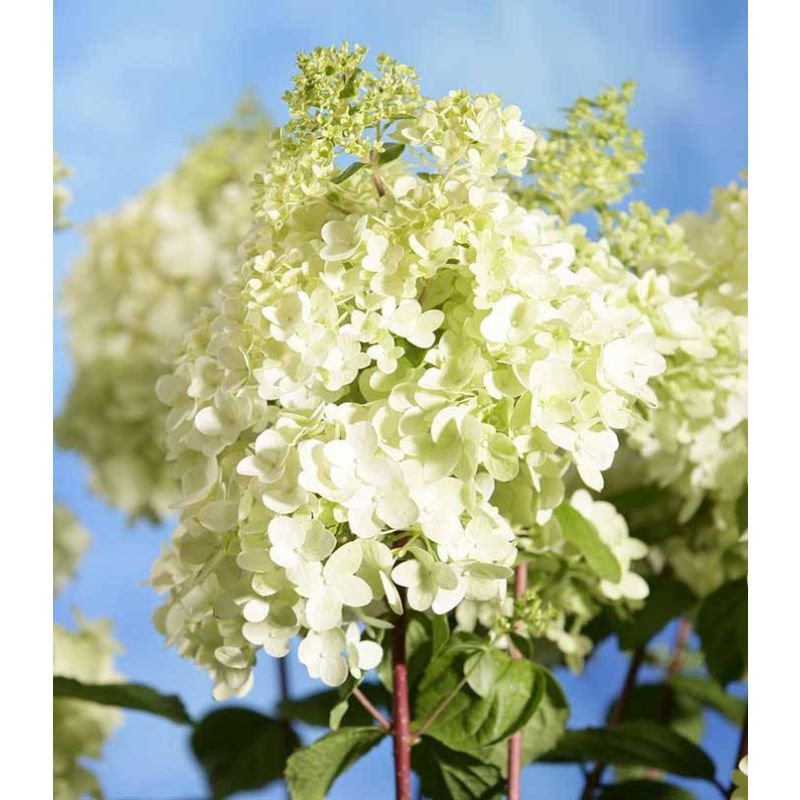The Phantom Hydrangea: A Stunning Shrub That Will Change Color Throughout The Summer
The Phantom Hydrangea is a stunning shrub that will change color throughout the summer. The large, conical blooms start out as a creamy white, then gradually fade to a soft pink as the season progresses. In the fall, the flowers can take on a bluish hue. This color-changing characteristic makes the Phantom Hydrangea a popular choice for gardeners who want to add a touch of interest to their landscape.
In addition to its beautiful blooms, the Phantom Hydrangea is also relatively easy to care for. It is hardy in USDA zones 3-9 and prefers full sun to partial shade. The plant is drought-tolerant once established, but it does appreciate regular watering during the first year after planting.
The Phantom Hydrangea is a relatively fast-growing shrub, reaching heights of 6-8 feet at maturity. It can be pruned in the spring to maintain its shape and size.
If you are looking for a stunning shrub that will add color and interest to your landscape, the Phantom Hydrangea is a great choice. It is easy to care for and will provide you with years of enjoyment.
Here are some additional facts about the Phantom Hydrangea:
- The scientific name for the Phantom Hydrangea is Hydrangea paniculata 'Phantom'.
- The plant was first introduced in 1997 by the German plant breeder Hans Hansen.
- The Phantom Hydrangea is a member of the Hydrangea family, which includes over 100 species of shrubs and trees.
- The flowers of the Phantom Hydrangea are made up of tiny florets that are arranged in a conical shape.
- The flowers of the Phantom Hydrangea are pollinated by bees and butterflies.
- The fruits of the Phantom Hydrangea are small, round capsules that contain seeds.
- The Phantom Hydrangea is a relatively long-lived shrub, with some plants living for over 50 years.
If you are considering adding a Phantom Hydrangea to your landscape, here are a few tips:
- Choose a location that receives full sun to partial shade.
- The soil should be well-drained.
- Amend the soil with compost or other organic matter before planting.
- Water the plant regularly, especially during the first year after planting.
- Fertilize the plant in the spring and fall with a balanced fertilizer.
- Prune the plant in the spring to maintain its shape and size.
With proper care, the Phantom Hydrangea will reward you with beautiful blooms for many years to come.
If you're looking for a beautiful and easy-to-care-for hydrangea, the Hydrangea paniculata Phantom is a great choice. This hardy shrub produces enormous, conical flowers that can reach up to 15 inches in length. The flowers start out creamy white with a lime green flush, and then gradually turn soft to deep pink as fall approaches. The blossoms stand out well against the foliage of oval, yellow-green leaves.
The Hydrangea paniculata Phantom is a relatively fast-growing shrub that can reach a height of 6-10 feet and a width of 4-6 feet at maturity. It prefers full sun or partial shade and well-drained soil. The plant is relatively drought-tolerant once established, but it does benefit from regular watering during the summer months.
The Hydrangea paniculata Phantom is a versatile plant that can be used in a variety of settings. It can be grown as a specimen shrub, in a mixed shrub border, or as a hedge. The flowers are also excellent for cutting and arranging in bouquets.
If you're interested in learning more about the Hydrangea paniculata Phantom, I recommend visiting . This website has a wealth of information about the plant, including its care requirements, planting instructions, and pest and disease prevention tips.
FAQ of hortensia paniculata phantom
- How do I care for a Hydrangea paniculata 'Phantom'?
Hydrangea paniculata 'Phantom' is a relatively easy plant to care for. It prefers full sun or light, dappled shade, and well-drained, fertile soil. It is hardy to USDA zones 3-9. To attain the largest possible flower heads, it should be pruned back hard to around 20-30 cm (1 ft) above ground level in early spring. It should also be mulched yearly to help retain moisture and suppress weeds.
- How do I plant a Hydrangea paniculata 'Phantom'?
To plant a Hydrangea paniculata 'Phantom', dig a hole that is twice as wide and as deep as the root ball. Add some compost or manure to the soil at the bottom of the hole. Place the plant in the hole and backfill with soil, tamping it down gently. Water the plant thoroughly.
- What are the common pests and diseases of Hydrangea paniculata 'Phantom'?
The most common pests of Hydrangea paniculata 'Phantom' are aphids, scale insects, and spider mites. These pests can be controlled with insecticidal soap or neem oil. The most common diseases of Hydrangea paniculata 'Phantom' are leaf spot, powdery mildew, and root rot. These diseases can be prevented by planting the plant in a well-drained location and watering it regularly.
- What is the best time to fertilize Hydrangea paniculata 'Phantom'?
The best time to fertilize Hydrangea paniculata 'Phantom' is in early spring, just as the new growth is starting. Use a balanced fertilizer, such as a 10-10-10 fertilizer. Apply the fertilizer according to the directions on the label.
- How long does it take for Hydrangea paniculata 'Phantom' to bloom?
Hydrangea paniculata 'Phantom' typically blooms in mid-summer. The flowers will last for several weeks.
Image of hortensia paniculata phantom
5 different images of "hortensia paniculata phantom" from pinterest.com:



Post a Comment for "The Phantom Hydrangea: A Stunning Shrub That Will Change Color Throughout The Summer"